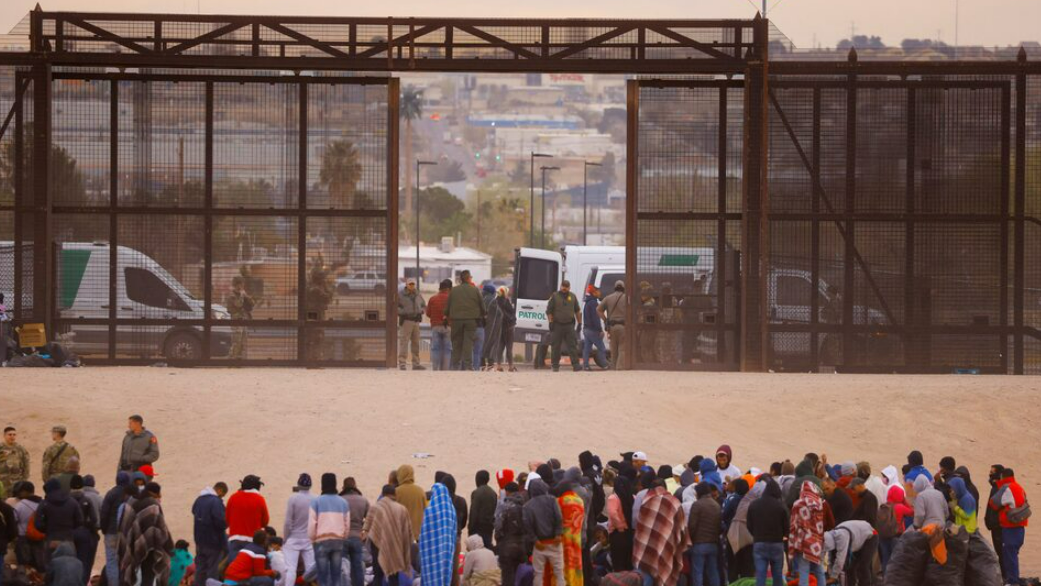## Trump’s Crackdown on Undocumented Immigrants: Analysis and Reports
Introduction
The Trump administration has recently intensified its efforts to crack down on undocumented immigrants in the United States. This includes the creation of a federal registry for undocumented immigrants and an executive order targeting sanctuary cities. Here is a detailed analysis and report on these developments.
Creation of a Federal Registry for Undocumented Immigrants
#
Overview
The Trump administration has announced plans to create a federal registry for undocumented immigrants. This registry will require individuals aged 14 and older who are in the U.S. illegally to register and provide fingerprints. Failure to comply could result in fines or misdemeanor prosecution[2][3][4].
#
Key Points:
– Registration Requirements: Undocumented immigrants must create an account with the U.S. Citizenship and Immigration Services (USCIS) and will soon be required to complete a registration form[4].
– Penalties for Non-Compliance: Those who fail to register may face fines or jail time. Additionally, immigrants over 18 must carry DHS-issued evidence of registration at all times[3][4].
– Legal Basis: The program is based on the Alien Registration Act of 1940, which has not been enforced for decades[3].
#
Impact and Criticism
Immigrant rights groups have criticized this move, arguing it criminalizes undocumented immigrants, who are technically in violation of civil, not criminal, law[4][5]. The registry does not provide legal status or employment authorization[3].
Executive Order Targeting Sanctuary Cities
#
Overview
President Trump has signed an executive order aimed at targeting sanctuary cities and ensuring undocumented immigrants do not receive federal benefits. The order directs federal agencies to identify programs providing financial benefits to undocumented immigrants and to strengthen eligibility verification systems[1].
#
Key Points:
– Sanctuary Cities: The order targets jurisdictions with limited cooperation with federal immigration enforcement, similar to efforts during Trump’s first term[1].
– Federal Funding: The administration seeks to ensure that federal funding does not support “sanctuary policies” that shield undocumented immigrants from deportation[1].
– Legal Background: The Personal Responsibility and Work Opportunity Reconciliation Act of 1996 already bars most undocumented immigrants from public programs, but the order argues the Biden administration undermined temporary parole authority[1].
#
Impact and Legal Challenges
This move is part of a broader effort to crack down on illegal immigration, with potential legal challenges ahead. House Republicans are also planning legislation to defund sanctuary cities[1].
Conclusion
The Trump administration’s recent actions reflect a significant escalation in efforts to manage and restrict undocumented immigration. These policies are likely to face legal and political challenges, given their controversial nature and the historical context of similar initiatives.
—
References
[1] [Politico: Trump Targets Sanctuary Cities](https://www.politico.com/news/2025/02/20/trump-targets-sanctuary-cities-00205108)
[2] [Bloomberg Government: Trump to Create Undocumented Immigrant Registry](https://news.bgov.com/bloomberg-government-news/trump-to-create-undocumented-immigrant-registry-through-dhs)
[3] [Los Angeles Times: Trump Administration Plans Registry for Undocumented Immigrants](https://www.latimes.com/california/story/2025-02-25/trump-to-create-registry)
[4] [Axios: Trump Admin Launches Immigrant Registry with Fingerprints, Jail Threat](https://www.axios.com/2025/02/26/trump-immigrants-registry-jail-fine-threat)
[5] [Axios: Trump Administration Confirms It Calls All Undocumented Immigrants “Criminals”](https://www.axios.com/2025/01/28/trump-immigrants-criminals-white-house-briefing)
Related sources:
[1] www.politico.com
[2] news.bgov.com
[3] www.latimes.com
[4] www.axios.com
[5] www.axios.com











